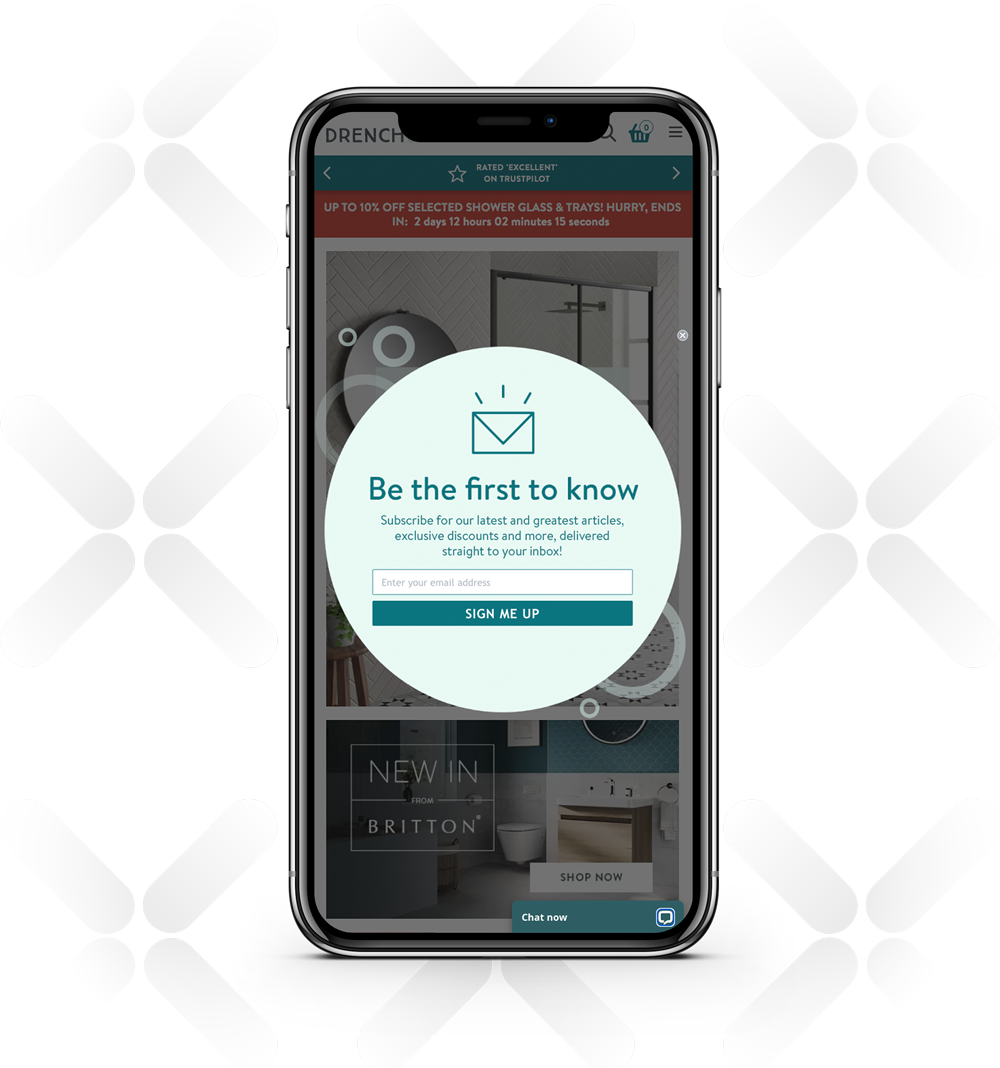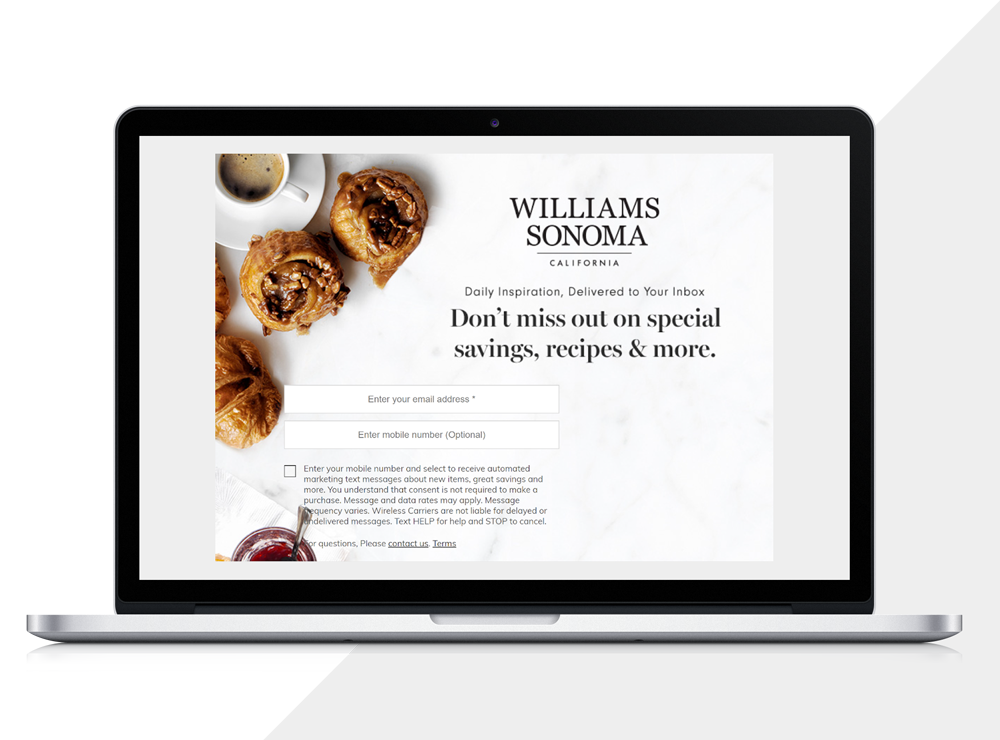EMAIL EXPERIENCE

Customer acquisition

The ultimate goal is to make email signup forms easy to find
Engage audiences with newsletters before they're ready to buy
With customer acquisition costs increasing 60% over the last six years, it's crucial for companies to make the best possible use of email lists as a key tool in their marketing funnel. This means placing signup forms in prominent positions on the website. 'Above the fold' positions, where visitors see the content without scrolling beyond the first page, is the best place to improve visibility. Many brands still ignore this best practice by burying their email sign-up forms in website footers where visitors must hunt for it — or, more likely, not bother with. While many websites feature pop-ups or sliders to capture a visitor's attention, this risks distracting the reader at a crucial time. The ultimate goal is to make email signup forms easy to find, but as Dotdigital has demonstrated, brands adopting the pop-over approach should consider the optimum time for it to appear.
Brands rely on incentives to encourage newsletter signups. The most popular such incentive is the use of discounts, including free shipping. This is a good way to demonstrate value early on in the customer relationship and encourage visitors to make the jump and purchase from a brand. While discount codes and coupons are useful, brands would benefit from exploring other options that provide value. These include educational content, such as courses and product inspiration, styling tips, editorial content, giveaways, or contests. Smoother post signup experiences emerged as an imperative for ecommerce brands. Some introduce unnecessary barriers even after collecting a visitor's email address. Retailers often fail to send newsletters and other useful material until a visitor has created a full customer account. This introduces more friction into the relationship, blocking the marketing funnel for customers that don't have time to create a customer account or forget to take that step.
Retailers often fail to send newsletters and other useful material until a visitor has created a full customer account
EXPERT COMMENTARY:

When it comes to acquiring customers, capturing a first-time visitor’s email address is a top priority for many e-commerce brands. With it, brands can personalize their marketing for each lead, provided, of course, that they follow today’s best practices. Sadly, many brands continue to rely on outdated principles, including burying its opt-in form in the website footer, offering unimaginative incentives (“Get Updates!”), and using website pop-ups that target all visitors, regardless of where they are in the buyer’s journey (not to mention resorting to boring copy).


Luxury bathroom retailer Drench used a prominent signup form in an eye-catching circular container. Although it promised possible discounts in the future, it didn't entice users with a specific offer, relying instead on valuable content. The company also made its signup process friction-free, collecting no more than the visitor's email address.

Williams Sonoma was innovative in its signup incentive, foregoing discount coupons to favor recipes for high-end kitchenware customers that would probably be more interested in cooking tips than coupons. Williams Sonoma also offered the chance to opt into SMS messaging, setting up a cross-channel market experience for customers.

